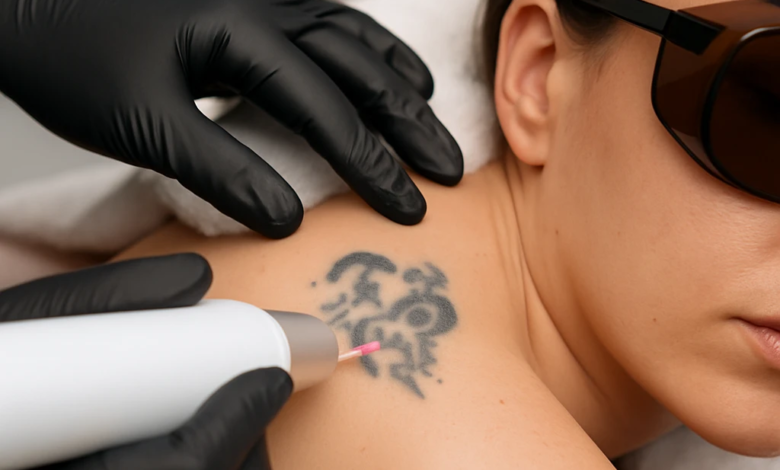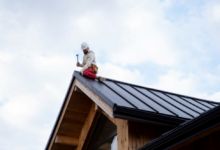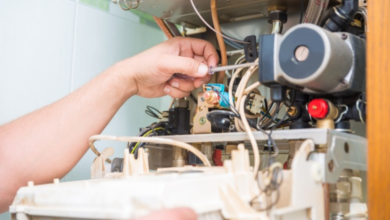Tattoo removal: From intake to aftercare your complete guide

You want the ink to fade, not your skin quality. The fastest path to results is rarely about using “the strongest setting,” but about personalisation, recovery windows, and disciplined aftercare. At NDN.LASER, we treat tattoo weglaseren as a guided process: clear intake, measured parameters, photo tracked progress, and realistic expectations from the first session to full recovery.
The intake: Mapping skin, ink and goals
Great outcomes begin with a thorough consultation. We determine Fitzpatrick skin type, catalogue the ink colours and age of the piece, check placement (e.g., forearm vs. ankle), and review medical history, medications, and sun exposure. Baseline photographs under fixed lighting make progress objective. We also define the goal total clearance or fading for a cover up because tattoo removal timelines and settings differ for each outcome.
How lasers actually clear ink
Laser pulses fragment pigment into microscopic particles that your immune system carries away via lymphatic pathways. Shorter pulses concentrate energy mechanically rather than thermally, protecting surrounding tissue. Wavelength targeting is crucial: 1064 nm typically addresses blacks and navies; 532 nm targets reds and oranges; 755 nm (alexandrite) often helps with greens and teals. Matching wavelength to pigment keeps treatments efficient and safer across skin tones.
Choosing technology: Pico or nano?
Q switched nanosecond platforms are proven workhorses. Picosecond systems add even shorter pulse widths, which can break up dense or stubborn pigment more efficiently with less thermal spread. Still, not every case needs pico from start to finish. The right plan for tattoo removal balances clearance rate with the risk of textural change or pigment shift, sometimes combining pico for specific colours with nano for broader passes.
Building your plan and spacing sessions
Ink clearance is a marathon of healing cycles. Most body areas respond best to 6-10 week intervals; the face and bony extremities sometimes need longer rests due to slower microcirculation. Early sessions usually deliver the most visible fading; later sessions chase residual colour. We re evaluate after every visit, adjusting fluence, spot size and pulse density so tattoo removal remains effective without over treating tissue that is still remodelling.

What influences the timeline
Several variables shape expectations:
- Ink chemistry & layering. Cover ups and composite pigments may require alternating wavelengths and more sessions.
- Depth & saturation. Deep lining and heavily packed areas clear more slowly than lightly shaded zones.
- Location. Ankles, hands and feet often clear slower; shoulders and upper back typically clear faster.
- Skin type. Higher melanin skins demand conservative settings and stricter sun control to keep risk low.None of these factors block progress; they simply define how tattoo removal is staged.
Comfort, cooling and what treatment feels like
Expect a series of quick, hot “snaps.” We use contact or forced air cooling, efficient pass strategies, and topical anaesthetic where indicated. Normal, short lived responses include frosting (a white haze), pinpoint oedema and warmth. Good comfort protocols keep sessions tolerable and consistent, while still delivering enough energy for visible change.
Safety first: Side effects and how we minimise them
The most important preventable risks are post inflammatory pigment alteration and delayed healing after unprotected sun. True textural change is rare when parameters respect skin biology and recovery windows. Your practitioner should explain how settings and intervals are tailored for tattoo removal on your complexion and how plans adapt after holidays, tanning, or skin irritation.
Pricing, value and comparing quotes
Low price per session can be offset by more visits, aggressive settings that risk downtime, or vague endpoints. Look for transparent per-session pricing, clear re evaluation points, and photo documented progress. The real value in tattoo removal is predictable fading with minimal complications, not the biggest joules in the shortest appointment.
Aftercare that accelerates results
Laser day is only half the story; recovery is where the gains consolidate. Keep the area cool for several hours, cleanse gently, and use a bland, fragrance free moisturiser or light occlusive as instructed. Avoid picking, high heat (sauna, hot yoga), and swimming until the surface is intact. Daily SPF 50 (plus physical cover when possible) is non negotiable throughout tattoo removal and for several weeks after each pass UV exposure is the number one driver of uneven outcomes.
What “permanent” really means
Most clients achieve a long term, substantial reduction rather than textbook zero. Dense outlines may leave a faint “ghost,” and some colours plateau before responding again after parameter tweaks. If the goal is a new tattoo, fading to a safe, workable canvas can require fewer visits than total clearance, and your tattoo removal plan can reflect that to save time and cost.
Why choose NDN.LASER
We combine multi wavelength platforms with both pico and nanosecond capability, then tailor passes to your ink map and skin biology. Each visit includes consistent photography, parameter notes and a short debrief, so tattoo removal stays transparent and adjustable. Safety first, outcome second, speed third because the best results come from respecting tissue recovery as much as laser physics.
From first consult to full recovery what success looks like
When you finish, the skin should feel like skin: quiet, supple and evenly toned for your complexion. If you are fading for a cover, we coordinate timing with your artist so they work on a stable canvas. If your target is complete clearance, we schedule a late follow up several months after the last pass; your immune system often keeps polishing results even after tattoo removal has ended. Most importantly, you leave with a predictable outcome, clear photographs of the journey, and confidence in how to care for the area long term. Bottom line: intentional assessment, the right wavelengths, measured intervals, rigorous aftercare and honest checkpoints produce cleaner, safer outcomes.
Discover how NDN.LASER can support you with customized solutions.





